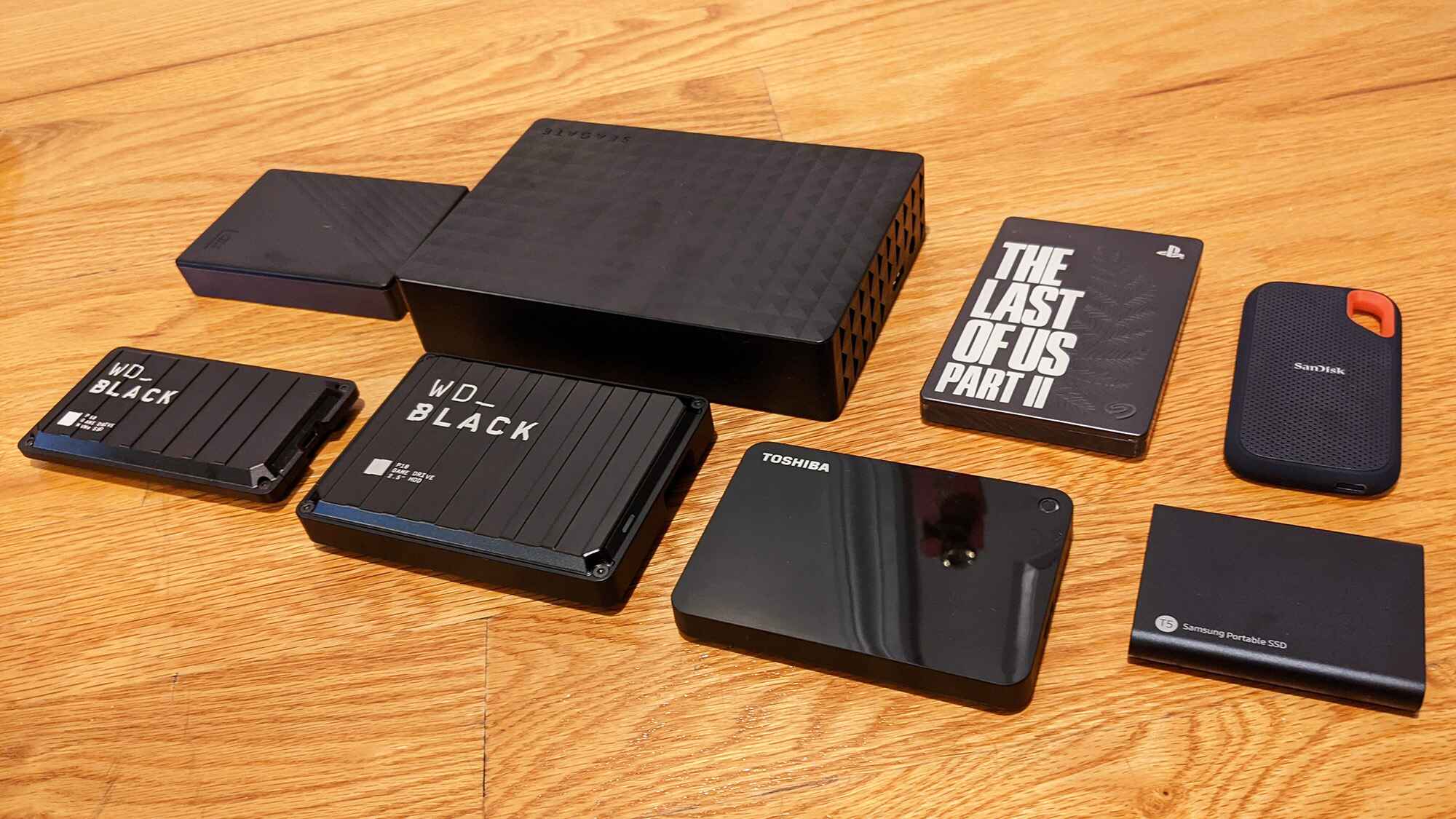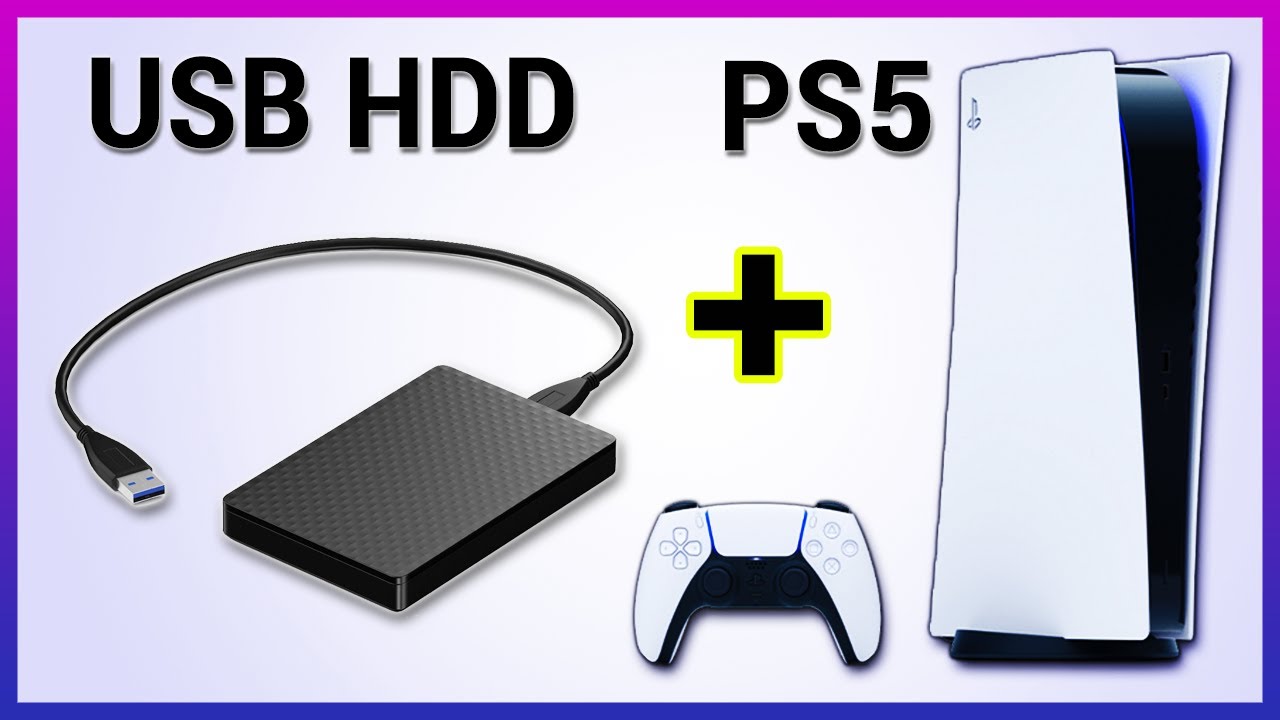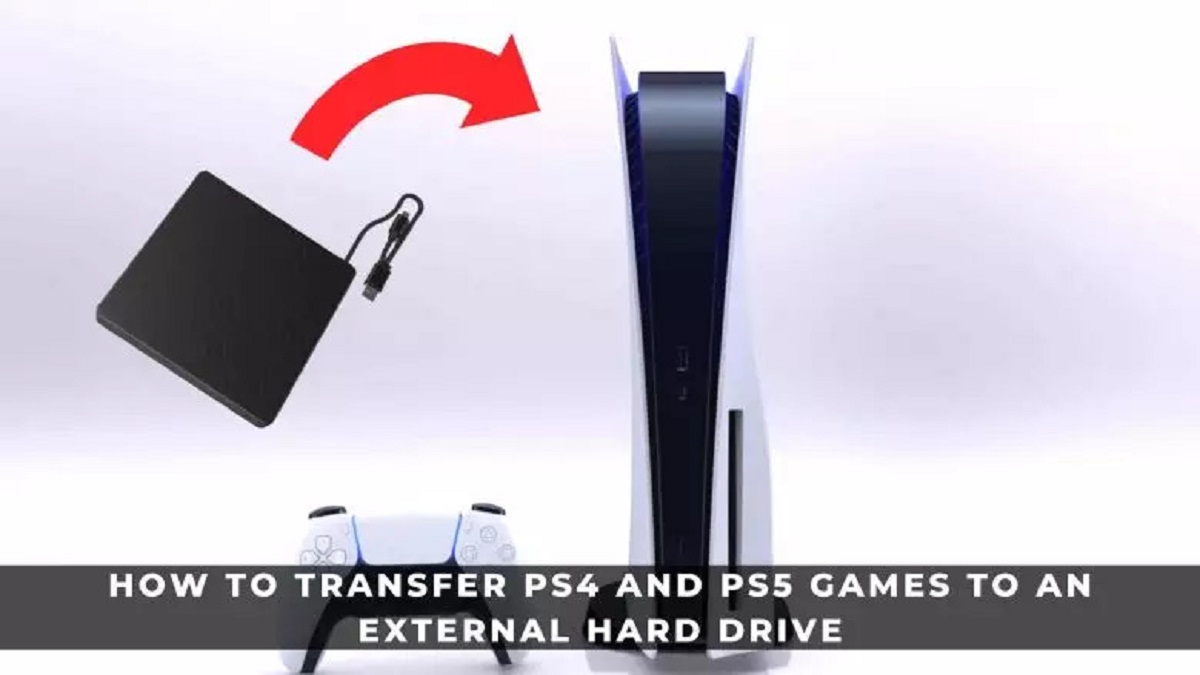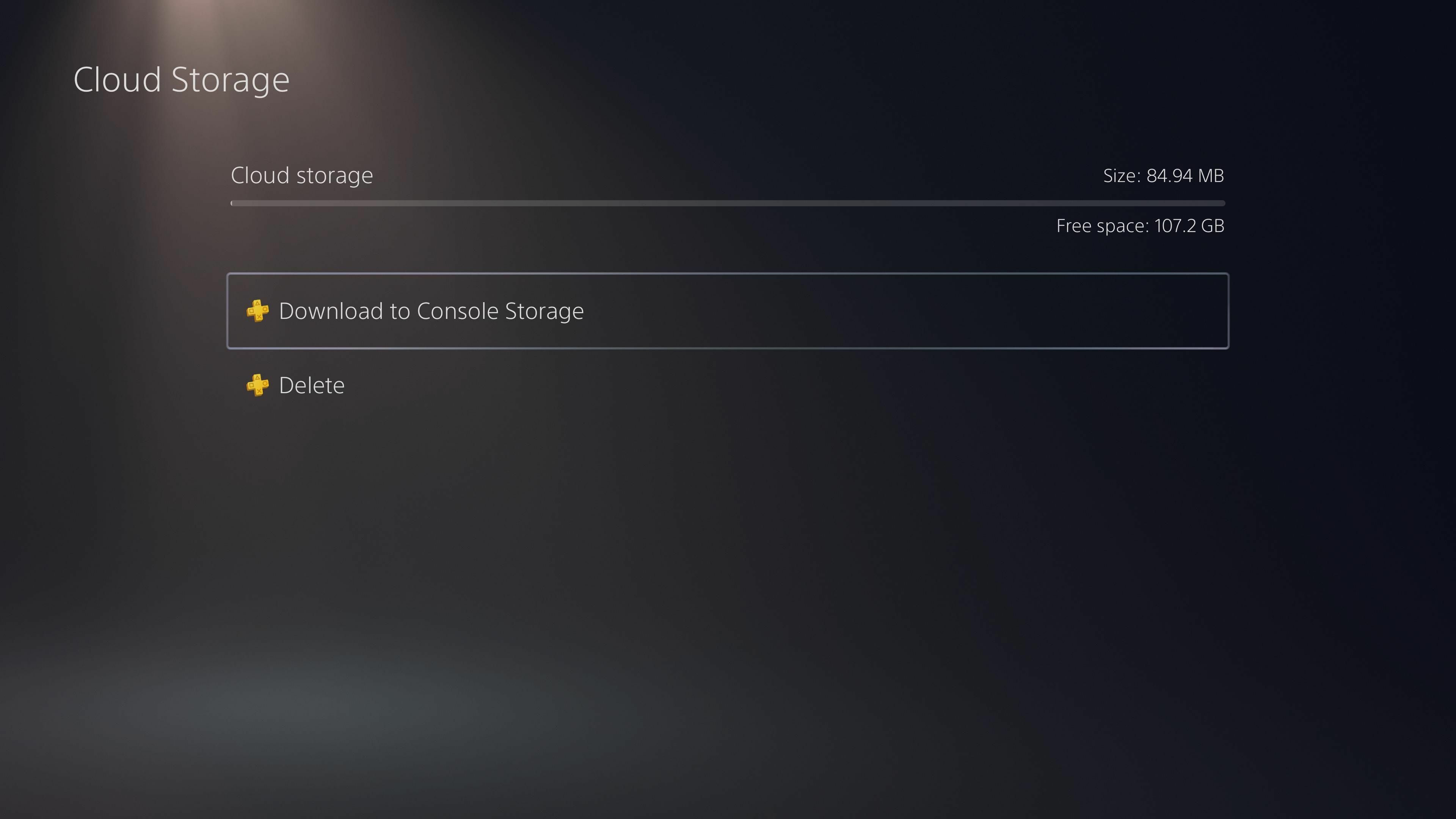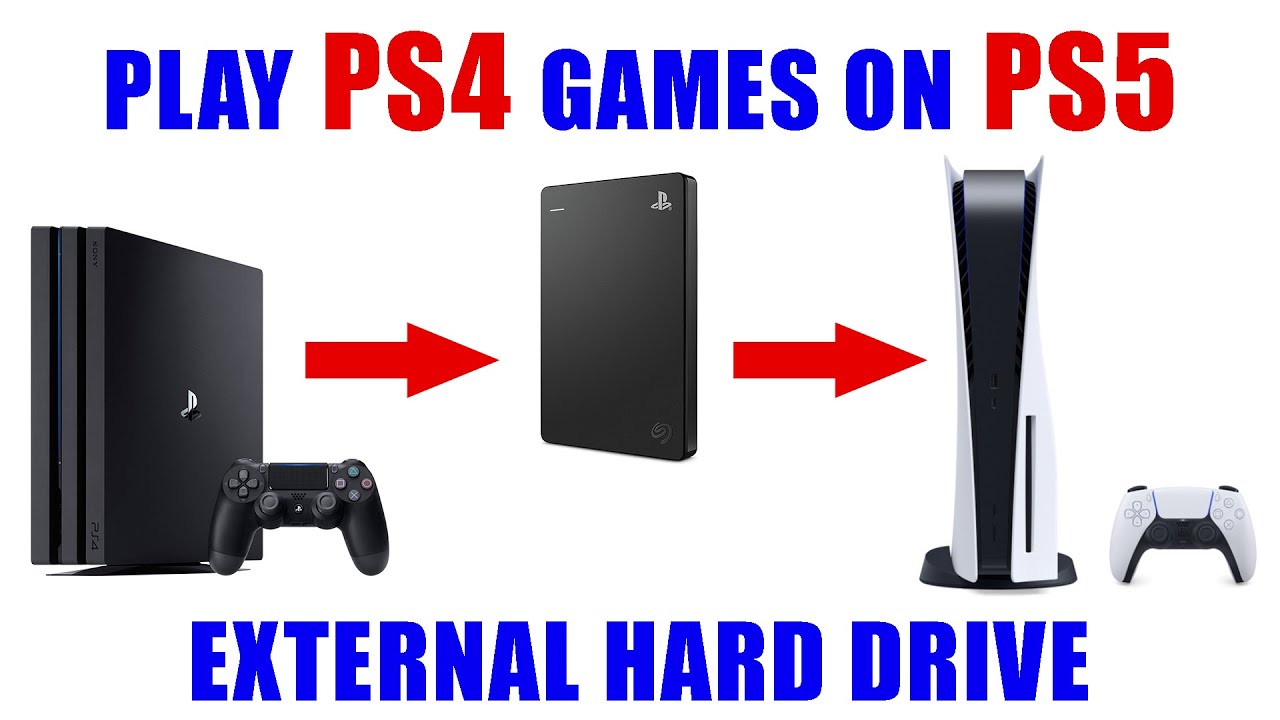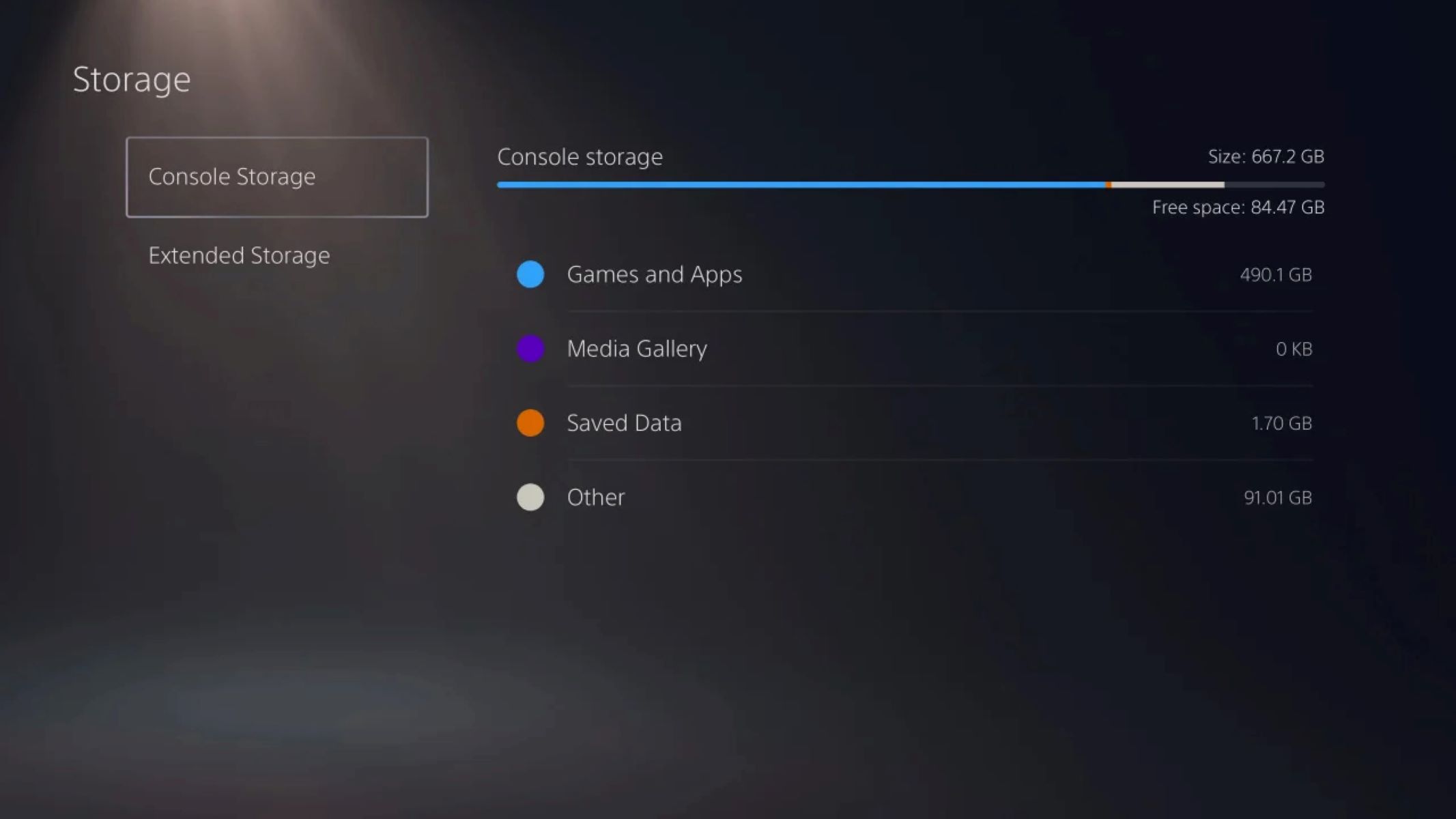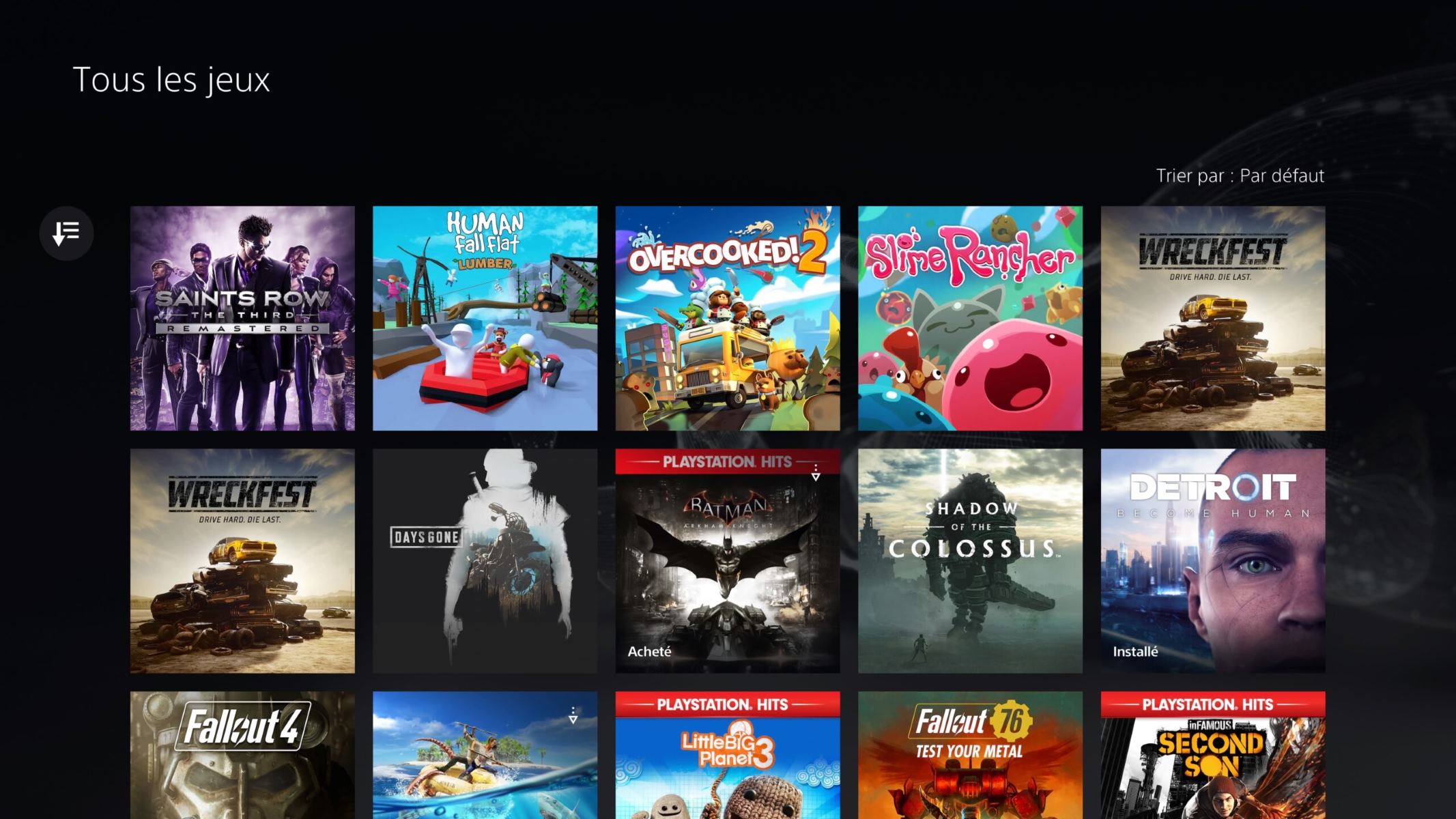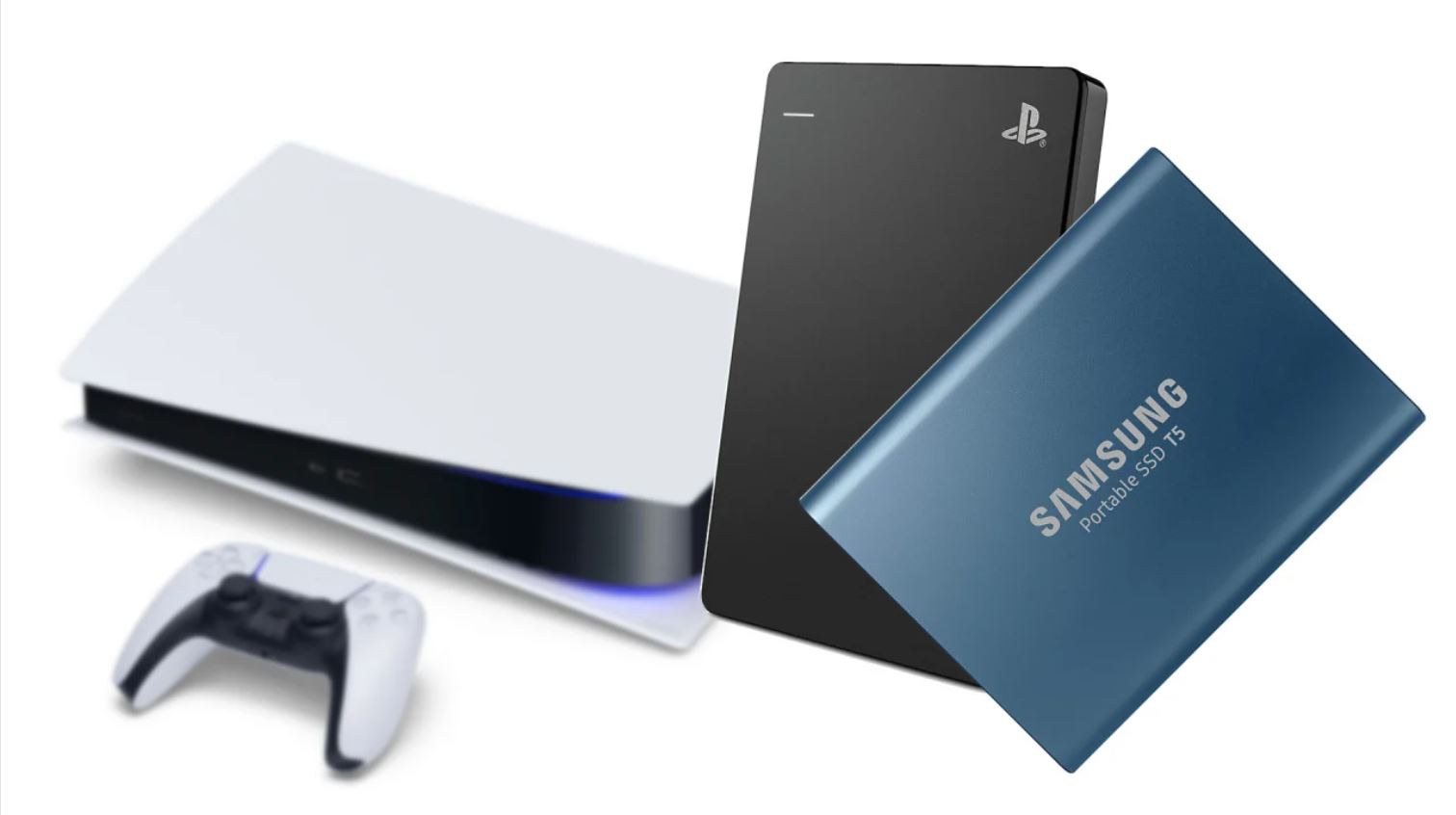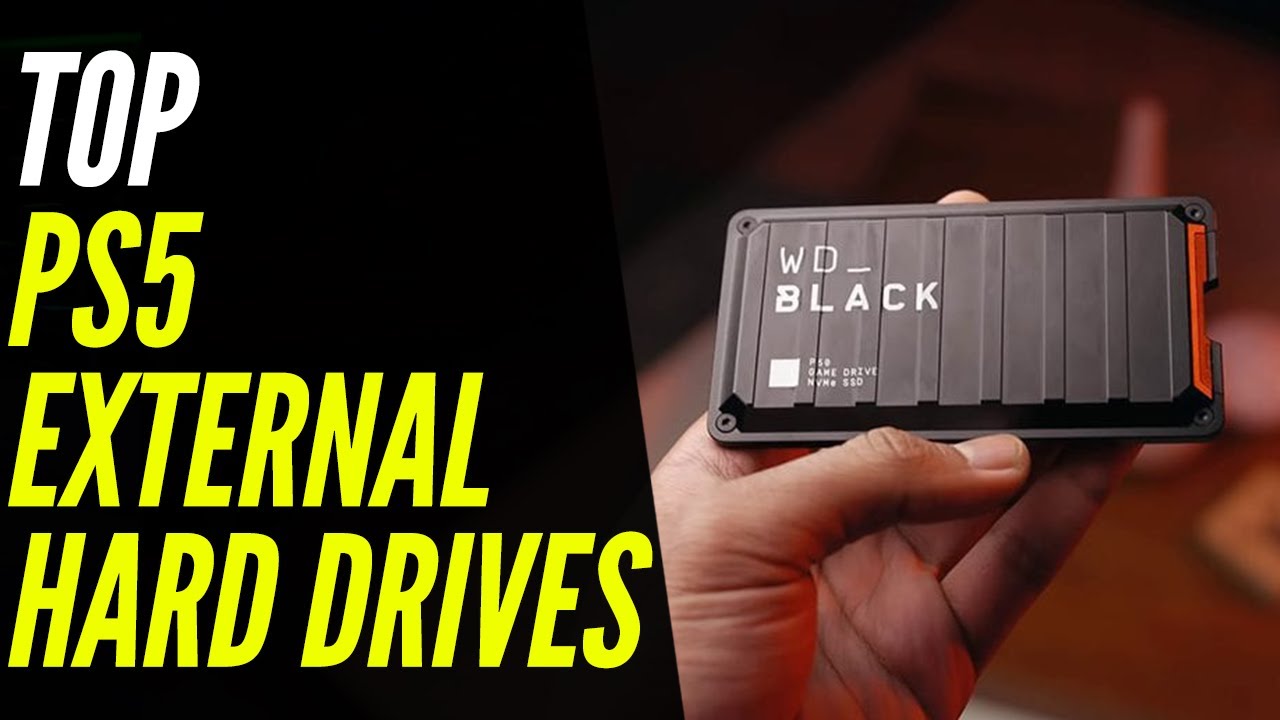Introduction
Welcome to the guide on how to download PS5 games to an external hard drive. One of the highlights of the PlayStation 5 is its massive storage capability, allowing you to store numerous games. However, as game sizes continue to increase, you might find yourself running out of space sooner than expected. Thankfully, with the PS5’s compatibility with external hard drives, you can easily expand your storage capacity and keep your favorite games within reach.
Gone are the days of deleting games to make room for new ones. By utilizing an external hard drive, you can enjoy a vast library of games without worrying about limited space on your console’s internal drive. In this guide, we will walk you through the process of setting up and utilizing an external hard drive with your PS5. Whether you’re a seasoned gamer or new to the PlayStation ecosystem, this guide will provide you with all the necessary steps to enhance your gaming experience.
Before we get started, it’s important to mention that external hard drives must meet certain specifications to be compatible with the PS5. Additionally, there are a few caveats and limitations when using external storage for PS5 games. We will cover all of these details and provide troubleshooting tips in case you encounter any issues along the way.
So, let’s dive in and learn how to make the most of your PS5’s storage capabilities by downloading and managing games on an external hard drive.
Compatibility of PS5 with External Hard Drives
The PlayStation 5 is designed to be compatible with external hard drives, allowing you to expand your storage capacity and keep more games at your fingertips. However, it’s important to note that not all external hard drives are compatible with the PS5.
When choosing an external hard drive for your PS5, make sure it meets the following specifications:
- USB Connection: The PS5 supports USB 3.0 or later, so ensure that your external hard drive has a USB 3.0 or USB 3.1 connection. This is essential for optimal performance and fast data transfer rates.
- Storage Capacity: The PS5 allows you to connect an external hard drive with a minimum capacity of 250GB and a maximum capacity of 8TB. It’s recommended to choose a hard drive with ample space to accommodate multiple games.
- External Power: Some external hard drives require external power sources, while others can draw power directly from the PS5’s USB ports. Check the specifications of your hard drive to determine if it needs external power.
Once you have ensured that your external hard drive meets the necessary specifications, you can proceed to connect it to your PS5. It’s worth noting that the PS5 allows for only one external storage device at a time, so make sure to choose a hard drive with sufficient storage capacity to meet your gaming needs.
Additionally, it’s essential to understand that while you can store and play PS4 games directly from an external hard drive, PS5 games cannot be played directly from external storage. To play PS5 games, they need to be transferred back to the console’s internal SSD. However, you can easily transfer games between the internal SSD and the external hard drive to free up space without losing your game progress or data.
Now that you understand the compatibility requirements and limitations when using external hard drives with the PS5, let’s move on to how to prepare your external hard drive for use with the console.
Preparing Your External Hard Drive
Before connecting your external hard drive to the PS5, you need to prepare it for use with the console. Follow these steps to ensure your external hard drive is ready:
- Format the Hard Drive: Most external hard drives come preformatted with a file system that may not be compatible with the PS5. To format your hard drive, connect it to a computer and use the appropriate formatting tool, such as the Disk Management utility on Windows or Disk Utility on Mac. Format the hard drive to exFAT or FAT32 file systems, as these are compatible with the PS5.
- Create a Folder: Once your hard drive is formatted, create a main folder on the drive called “PS5” (without the quotation marks). This folder will serve as the main directory for your PS5 games.
- Create Individual Game Folders: Within the “PS5” folder, create separate folders for each game you plan to transfer to the external hard drive. Naming the folders based on the game’s title will help you stay organized.
By following these steps, your external hard drive will be properly prepared and ready to connect to your PS5. Now let’s move on to the process of connecting the external hard drive to your console.
How to Connect the External Hard Drive to Your PS5
Connecting an external hard drive to your PS5 is a straightforward process. Here’s what you need to do:
- Power Off Your PS5: Before connecting the external hard drive, make sure to power off your PS5 completely. You can do this by pressing the power button on the console or selecting “Power” from the quick menu and choosing “Turn Off PS5.
- Locate the USB Ports: The PS5 has USB ports on both the front and back of the console. Choose the USB port that is most convenient for you to access.
- Connect the External Hard Drive: Take the USB cable that came with your external hard drive and plug one end into the USB port on your PS5. Then, connect the other end to the external hard drive itself. Ensure that the connection is secure.
- Power On Your PS5: After connecting the external hard drive, power on your PS5 by pressing the power button. The console will detect the new storage device automatically.
- Format the External Hard Drive (Optional): In some cases, the PS5 may prompt you to format the external hard drive. If this happens, follow the on-screen instructions to format the drive. Note that formatting will erase all data on the hard drive, so make sure you have backed up any important files beforehand.
Once the external hard drive is connected and detected by the PS5, you’re ready to set it up as the default storage option for games. This will ensure that any new games you download or install will be stored on the external drive automatically, freeing up space on the console’s internal storage.
Now that you know how to connect your external hard drive to the PS5, let’s proceed to setting it up as the default storage option for games.
Setting Up Your External Hard Drive as the Default Storage Option for Games
Once you have connected your external hard drive to the PS5, you can configure it as the default storage option for games. This means that any new games you download or install will be stored on the external drive by default, saving space on your console’s internal storage. Here’s how to set it up:
- Access the Settings Menu: From the PS5 home screen, navigate to the settings menu. You can do this by selecting the gear icon located in the top right corner of the screen.
- Select “Storage”: In the settings menu, locate and select the “Storage” option. This will take you to the storage settings page.
- Choose “Extended Storage”: On the storage settings page, you will see the various storage options available. Look for the “Extended Storage” section and select it.
- Select Your External Hard Drive: In the extended storage section, you will see your connected external hard drive listed. Select it to proceed.
- Set as Default: Once you have selected your external hard drive, you will have the option to set it as the default location for game installations. Choose the “Set as Default” option to confirm your selection.
With these steps, you have successfully set up your external hard drive as the default storage option for games on your PS5. From now on, any new games you download or install will be saved directly to the external drive, alleviating space constraints on your console’s internal storage.
It’s important to note that existing games stored on the PS5’s internal storage will not automatically move to the external hard drive. However, you can manually move games between the internal storage and the external drive to free up space or optimize storage allocation.
Next, let’s explore how to transfer games to the external hard drive and manage them effectively.
Transferring Games to the External Hard Drive
Now that you have set up your external hard drive as the default storage option for games on your PS5, you may want to transfer existing games or install new ones directly to the external drive. Here’s how you can transfer games to the external hard drive:
- Access the Settings Menu: From the PS5 home screen, navigate to the settings menu by selecting the gear icon located in the top right corner of the screen.
- Select “Storage”: In the settings menu, locate and select the “Storage” option to go to the storage settings page.
- Choose “Console Storage”: On the storage settings page, you will see the various storage options. Select the “Console Storage” option.
- Select Games to Transfer: In the console storage section, you will see a list of games installed on your PS5’s internal storage. Choose the games you want to transfer to the external hard drive.
- Initiate the Transfer: With the games selected, choose the “Move” option to transfer the games from the internal storage to the external hard drive. Follow the on-screen prompts to confirm the transfer.
The transfer process may take some time, depending on the size of the games being transferred and the speed of your external hard drive. It’s important to ensure that your PS5 remains powered on and connected to a stable power source during the transfer process.
Once the transfer is complete, the games will be moved from the internal storage to the external hard drive, freeing up space on your console. You can access and play these games directly from the external drive, with no impact on performance or gameplay experience.
If you want to download new games directly to the external hard drive, simply navigate to the PlayStation Store and select the external drive as the storage location when prompted during the download process. This will ensure that the game is downloaded directly to the external drive, bypassing the console’s internal storage altogether.
Now that you know how to transfer games to the external hard drive, let’s explore how to effectively manage and organize your game library on the external storage.
Managing and Organizing Games on the External Hard Drive
Now that you have transferred games to your external hard drive and have started building your game library on it, it’s important to manage and organize your games effectively. Here are some tips for managing and organizing your games on the external hard drive:
- Create Folders for Different Game Categories: To keep your games organized, consider creating folders based on different categories, such as genres or game types. This will make it easier to find specific games when you want to play them.
- Arrange Games Alphabetically: Within each category folder, arrange the games alphabetically to make it easier to locate and access them. This will save you time and make your game library more user-friendly.
- Regularly Check for Game Updates: Just like with games installed on internal storage, games on the external hard drive may require updates from time to time. Make it a habit to check for and install game updates to ensure you’re playing the latest versions and enjoying optimal gameplay experiences.
- Remove Unplayed or Unwanted Games: If you find that your external hard drive is filling up and you’re running out of space, consider removing games that you no longer play or have completed. This will free up space for new games without sacrificing performance or storage.
- Back Up Your Game Data: While the external hard drive provides additional storage space, it’s still important to back up your game data regularly. Consider creating backups of your save files, game settings, and other important data to safeguard against any potential loss or hard drive failures.
By implementing these organization and management strategies, you can keep your game library on the external hard drive well-structured and easy to navigate. A well-organized library will ensure that you can quickly find and enjoy your favorite games without any hassle.
Next, let’s discuss the process of safely disconnecting the external hard drive from your PS5.
Disconnecting the External Hard Drive from Your PS5
If you need to disconnect the external hard drive from your PS5 for any reason, it’s important to do so safely to avoid potential data corruption or damage. Follow these steps to safely disconnect your external hard drive from the console:
- Close Any Running Games or Apps: Before disconnecting the external hard drive, make sure to close any games or applications that may be running from it. This will ensure that all data is properly saved and prevent any potential data loss.
- Select “USB Devices” in the Quick Menu: While on the PS5 home screen, press the PS button on the controller to open the quick menu. From there, navigate to the “USB Devices” option.
- Choose Your External Hard Drive: In the USB Devices menu, you will see a list of connected USB devices, including your external hard drive. Select your hard drive from the list.
- Select “Disconnect”: After selecting your external hard drive, choose the “Disconnect” option. This will safely eject the hard drive from the PS5.
- Wait for Confirmation: Once you have selected “Disconnect,” wait for the confirmation message that it is safe to remove the hard drive. This ensures that all data has been properly written and that it is safe to physically disconnect the drive.
- Remove the External Hard Drive: After receiving the confirmation message, you can safely unplug the USB cable from the PS5 and remove the external hard drive.
It’s crucial to follow these steps to prevent any potential data corruption or loss on your external hard drive. Abruptly disconnecting the drive without properly ejecting it may result in data errors or other issues that could impact the usability of the hard drive.
Now that you know how to safely disconnect your external hard drive from your PS5, you can confidently connect and disconnect the drive whenever needed.
Troubleshooting Common Issues with External Hard Drives on PS5
While using an external hard drive with your PS5 is generally a smooth experience, you may encounter some common issues. Here are a few troubleshooting tips to help you resolve these issues:
- Ensure Proper Connection: Double-check that your external hard drive is securely connected to the USB port of your PS5. Loose connections can cause the drive to disconnect or not be recognized by the console.
- Check Compatibility: Verify that your external hard drive meets the compatible specifications outlined by Sony for use with the PS5. Make sure it is formatted to the correct file system (exFAT or FAT32) and has sufficient storage capacity.
- Update System Software: Keep your PS5 system software up to date. System updates often include improvements and bug fixes that can address compatibility issues with external storage devices.
- Try a Different USB Cable or Port: If your external hard drive is not being recognized, try using a different USB cable or connecting it to a different USB port on your PS5. A faulty cable or port could be the cause of the issue.
- Format the Hard Drive: If your external hard drive is not detected by the PS5, it may be due to a compatibility issue with the current file system. Try formatting the drive to exFAT or FAT32 using a computer, following the appropriate formatting tool.
- Reset or Rebuild Database: If you are experiencing performance issues or your external hard drive is not functioning properly, consider performing a database rebuild on your PS5. This can help resolve any software-related issues that may be affecting the external storage.
- Contact Support: If you have tried these troubleshooting steps and are still experiencing issues with your external hard drive, it may be helpful to reach out to Sony support or the manufacturer of the external hard drive for further assistance. They may be able to provide specific troubleshooting solutions or determine if the drive requires repair or replacement.
Remember, troubleshooting steps may vary depending on the specific issue you encounter. It’s always a good idea to consult the official PlayStation support documentation or reach out for technical support if needed.
By following these troubleshooting tips, you can address common issues that may arise when using an external hard drive with your PS5, ensuring a smooth gaming experience and optimal storage performance.
Conclusion
In this guide, we’ve covered the essential steps for using an external hard drive with your PS5. By expanding your storage capacity, you can enjoy a vast library of games without worrying about limited space on your console’s internal drive. We discussed the compatibility requirements, including the necessary USB connection and minimum and maximum storage capacity.
Preparing the external hard drive involved formatting it to the appropriate file system and creating folders for organizing your games. We also explained how to connect the external hard drive to your PS5 and set it up as the default storage option for games. This ensures that any new games you download or install will be saved directly to the external drive, saving space on the console’s internal storage.
We learned how to transfer games to the external hard drive, manage and organize the game library effectively, and safely disconnect the hard drive from the PS5. Additionally, we provided troubleshooting tips for common issues that may arise when using external storage devices with the console.
By following the steps outlined in this guide, you can seamlessly integrate an external hard drive into your PS5 gaming setup and enjoy a more expansive and organized game library. With increased storage capacity, you’ll have the freedom to download and play your favorite games without worrying about limited space.
Now, armed with this knowledge, you can enhance your gaming experience on the PS5, expanding your gaming horizons with an external hard drive.







